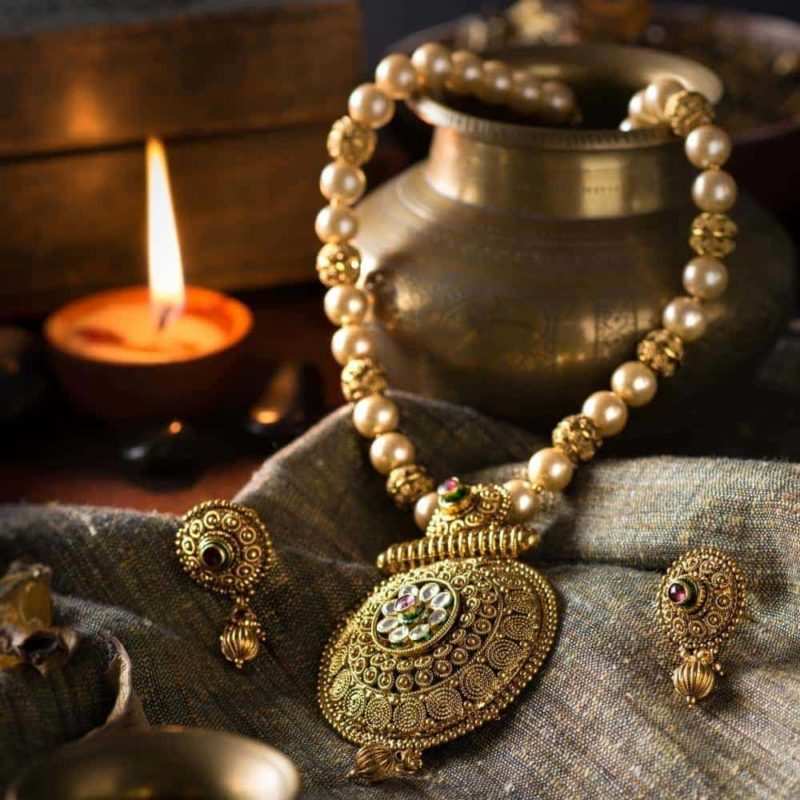Women and Jewelry: The Tradition of Wearing Jewelries in Hindu Culture
Jewelry helps in enhancing one’s beauty. It also symbolizes wealth, power, and status. For some, jewelry is a form of art for self and creative expression. Then, there are some people who use jewelry as part of their tradition and culture. Though they may differ in terms of importance and relevance, they all play significant roles.

Significance of Jewelries in Indian Culture
For the Indian culture, jewelries plays a symbolic role. They carry ethnic and spiritual meanings, especially during weddings. The pieces of jewelries worn by the bride signifies that she is to become a part of her husband’s extended family. They are a part of the purification ritual as she becomes a part of the extended family of her bridegroom.
Indians give importance to the nuances of bridal jewelries. The heavier the nuances of these jewelries are, the bigger role they play in the legacy of the family and the jewelry itself. So before giving the jewelries to the bride, the family often makes sure that they are heavy with more distinct designs.
Aside from bridal jewelries worn by the bride, there are also religious jewelries. These are often connected to the Gods and Goddesses in Hinduism. Wearing these jewelries signifies that you are asking for protection from these divine beings. It also a way of asking blessing.
Different Jewelry Materials and Their Importance
As mentioned above, jewelleries carry a very deep significance in both tradition and religious beliefs. And these jewelleries are made from precious stones and metals or a combination of these two.
- Gold
Gold is the most popular metal used in making jewelry. It is durable and doesn’t tarnish despite of everyday use. For many Hindus, gold is considered precious. Hindus believe that gold has the power to purify anything it touches. It is also considered as a sign of power and wealth. Aside from that, it also symbolizes good health, prosperity, and femininity.
- Silver
Silver is also another metal that is often worn by people. It stands next to gold. In the Hindu culture, gold is worn above the waist. Meanwhile, you can wear silver from waist down. Bangles, rings, anklets are usually made in silver. Silver, in their, tradition signifies protection from magic. Hindus believe that silver stands for the Moon or Luna. It symbolizes femininity and motherhood. It is also believed that it helps fight negative emotions and improves one’s dreams.
- Copper
Another commonly worn metal is copper. Copper is often associated with fertility and money. Being a highly conductive metal, it can easily merge with other metal alloys to produce a more conductive and durable jewellery. Copper jewelleries signify love, peace, and better relationships with your loved ones. It can also help people create better rapport with others.
- Platinum
Platinum is one of the most expensive metals that is used in making jewelleries. It is easy to clean; you can use mild soap and a soft cloth to bring back its luster. It is also known as a hypoallergenic metal, which is perfect for people suffering from allergies
- Diamond
Diamond is one of the most popular gemstones used in jewelleries. It is often associated with weddings and engagements. In traditions, diamond brings comfort to its wearer. This stone carries supernatural powers that will lead them to success. Diamond signifies purity, innocence, and eternal love.
In Indian tradition, a diamond’s meaning differs depending on the person’s caste. The colors of the gemstones also depend on the person’s statues. People belonging to the Brahmins must wear a white diamond while the Kshatryas must adorn themselves with red gemstones, which signify obedience of people below his caste. The Sudra, as the lowest caste, shall wear black. Meanwhile, the Baniyas shall wear yellow.
Wedding and Religious Jewelleries
Compared to Western weddings, Indian traditional weddings are often colourful and lavish. The bride wears several ornaments with significant presentations. The bride wears these jewelleries from head to foot. Necklaces signify protection and prosperity. Nose ornaments often signify that the bride is of marrying age. Ear ornaments symbolize the bride’s mental and physical health. .
Rings are commonly used in marriage as well. In Indian weddings, they do not only use one-finger ring but a web-like hand ornament called haath phool. They also have head ornaments which protect the wife and husband and used as a sign of their married status. Feet ornaments like anklets and toe rings preserve the wife’s energy and promote better menstrual cycles.
Religious jewelleries symbolize the faith of the person. The design of religious jewelleries varies depending on the person’s religions. Each religion has a specific design which makes it easier to identify them. Religious jewelleries are usually worn as amulets and talismans as protection against bad spirits.
Some religious jewelleries can be placed between the eyebrows. They call this as the Tilak. This religious ornament stands as the door of one’s soul. It gives the wearer a feeling of belongingness. Aside from that, it makes them feel a step closer to their divine beings.
Changes Over the Year
Over the years, traditions have changed. However, jewelleries remain constant. The transition from wooden jewelleries to metal designs are seen. Jewellery makers have learned to incorporate several precious metal to create a more durable jewellery. Aside from that, they have started to use several stones that are not commonly used in traditional jewelleries like amethyst and garnet.
These customizations in creating and designing jewelleries pave ways to mass production of jewelleries. They are no longer limited to traditional and religious use. However, they are also use to enhance a person’s beauty. Colors are no longer decided according to one’s status, but they can now be used to match different clothes and occasions.
Conclusion
Overall, jewelry plays an important role in culture and religion. Despite the changes of its composition and design of jewelries, they have never lost their value.
